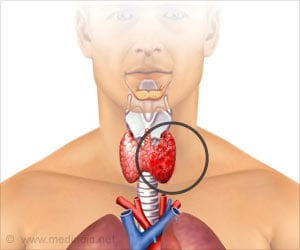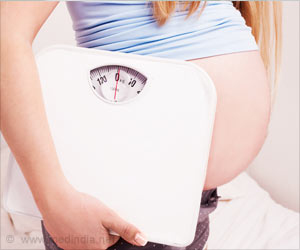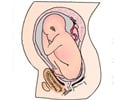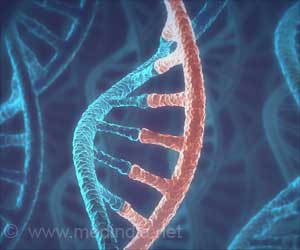The American Thyroid Association (ATA) has developed evidence-based recommendations for the management of thyroid disease during pregnancy.
Highlights
- Thyroid disease in pregnancy is a common clinical condition.
- The American Thyroid Association (ATA) has developed evidence-based recommendations for the management of thyroid disease in pregnant and postpartum women.
- These guidelines provide recommendations for methods of optimal care for patients with these disorders.
A normal pregnancy results in a number of important physiological and hormonal changes that alter thyroid function.
During pregnancy, two main hormones influence thyroid functions: human chorionic gonadotropin (hCG), the hormone that is measured in the pregnancy test and estrogen, the main female hormone.
The high levels of HCG during pregnancy may result in a slightly low thyroid stimulating hormone or TSH . When this occurs, the TSH will be slightly decreased in the first trimester and then return to normal throughout the duration of pregnancy.
Estrogen increases the amount of thyroid hormone binding proteins in the serum which increases the total thyroid hormone levels in the blood.
The World Health Organization recommends iodine intake of 200 micrograms/day during pregnancy to maintain adequate thyroid hormone production.
The new Guidelines include 97 updated, evidence-based recommendations.
It helps define current best practices for thyroid function testing, iodine nutrition, pregnancy complications, and treatment of thyroid disease during pregnancy and lactation.
In pregnant women, the Guidelines provides information on the assessment and treatment of thyroid disease during pregnancy, preconception, and the postpartum period.
The Guidelines also prompt thyroid considerations among infertile women and in fetus and neonates.
The Guidelines include recommendations related to the diagnosis and management of various thyroid conditions like:
Hypothyroidism- Underactivity of the thyroid gland causes hypothyroidism. In hypothyroidism the thyroid gland does not make enough thyroid hormone to keep the body running normally.
If not treated, hypothyroidism can cause maternal anemia, muscle pain, weakness, congestive heart failure, pre-eclampsia, placental abnormalities, low birth weight infants, and postpartum hemorrhage.
In the baby, Thyroid hormone is critical for brain development. If not managed well, children born with congenital hypothyroidism (no thyroid function at birth) can have severe cognitive, neurological and developmental abnormalities.
Hyperthyroidism- It is also known as thyrotoxicosis. It is caused by overactivity of the thyroid gland. Hyperthyroidism may present during the first trimester or may aggravate during this period when a woman already has the condition.
If adequate care is not give, hyperthyroidism can result in early labor and a serious complication known as pre-eclampsia.
Uncontrolled maternal hyperthyroidism has been associated with fast fetal heart rate, small for gestational age babies, prematurity, stillbirths and congenital malformations.
Thyroid nodules- Thyroid nodules are common lumps in the thyroid gland.These lumps can be solid growths of thyroid tissue or fluid-filled cysts. Most nodules that occur during pregnancy do not cause problems.
Some thyroid nodules can trigger hyperthyroidism or hypothyroidism which in turn can affect the health of a pregnant woman and her baby. Though most nodules are benign, appropriate treatment is required as some of these nodules can become malignant.
Thyroid cancer- Certain risk factors for thyroid cancer among pregnant women are older age and low iodine intake.
Opinions
"These guidelines provide a superb overview on the pathophysiology and the clinical management of thyroid disorders during and after pregnancy. In addition, they also define areas where additional research is needed; this will allow keeping the document living with further updates in the coming years," says Peter A. Kopp, MD, Editor-in-Chief of Thyroid and Professor of Medicine, Northwestern University Feinberg School of Medicine, Chicago.
"Produced by an international panel of recognized experts, these updated guidelines add to the library of similar documents on thyroid disease that serve as the gold standard for diagnosis and management of thyroid disorders and identify critical areas where more research and knowledge is needed," says, John C. Morris, III, MD, President of the ATA, Mayo Clinic, Rochester, MN.
"With an estimated 300,000 pregnancies impacted by thyroid disease in the United States annually, these guidelines coalesce the best available evidence into clear clinical recommendations, and will improve the health of many, many mothers and newborns alike," say Dr. Alexander and Dr. Pearce.
The "2017 Guidelines of the American Thyroid Association for the Diagnosis and Management of Thyroid Disease during Pregnancy and the Postpartum" was led by Erik K. Alexander MD, Brigham and Women's Hospital and Harvard Medical School, Boston, MA and Elizabeth N. Pearce, MD, MSc, Boston University School of Medicine.
The Guidelines are published in Thyroid, a peer-reviewed journal from Mary Ann Liebert, Inc., publishers and the official journal of the ATA.
References
- Thyroid Disease and Pregnancy - (http://www.thyroid.org/thyroid-disease-pregnancy/)
- Thyroid Nodules and Cancer During Pregnancy - (http://www.hormone.org/patient-guides/2012/thyroid-nodules-cancer-and-pregnancy)
- Erik K. Alexande et al.2017 Guidelines of the American Thyroid Association for the Diagnosis and Management of Thyroid Disease during Pregnancy and the Postpartum. Thyroid; (2017) doi:10.1089/thy.2016.0457
Source-Medindia















